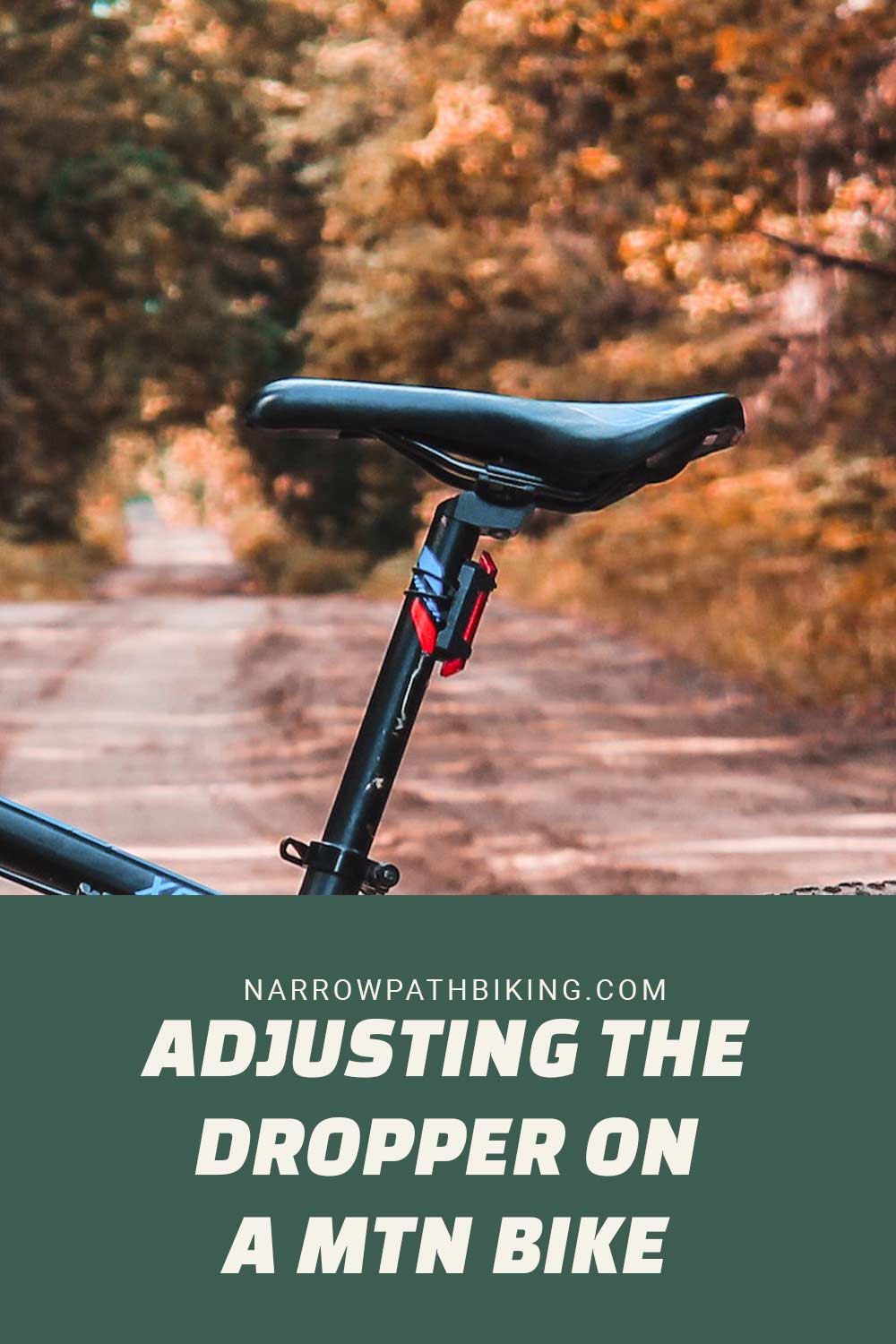The adjustment process begins with an examination of the system itself. For example, externally routed setups require checks for kinks, frayed cables, and corrosion. In contrast, internal routed systems will require the removal of the seat to inspect the inner housing.
After the process of looking over the system, if everything is checked out and undamaged, then begin with checking the air pressure of the dropper. After a thorough inspection, if the system needs bleeding, replace any seals and the seat, if possible.
Similar to a derailleur cable, your dropper seat post will have a barrel adjuster for minor corrections to the tension, along with maintaining system pressure.
Should I Turn it Clockwise or Counterclockwise?
If you press the lever for the brakes or dropper, and the post does not budge, Check for any fasteners, then try again; if the seat does not move gradually, there is a tension issue. A few things could happen with the dropper, seat post, brakes, and suspension lever systems.
If the seat does not move up or down, the tension on the cable is too light and will require you to twist the post clockwise. If the seat post moves without levers, you’ll need to add tension to the link system by turning the seat counterclockwise.
What Pressure Should Your Dropper Post Be?
When checking or rebalancing the air pressure in the dropper system, remember to keep tabs on the sensor equipment when adding air. The PSI, on average, should be between one hundred and fifty to two hundred and fifty PSI.
Now, this is a general number to reference, but to be entirely sure, the owner of the bike should bring the bike in for service.
Take the time to learn from the expert, watch what they do, and listen to the information given; they may have a more accurate number for the particular mountain bike riding.
How Do You Make a Dropper Post Lever Easier to Push?
There are a few different ways to approach this project; the first step should always be to clean the bike and associated parts. A thorough deep clean can help break calcium deposits, dirt, or rust-caused sticking.
Next, check the hydraulic fluid levels along with the lubrication of the dropper/bike seat post. With proper maintenance practices, a biker can prevent any damage or rust.
To accomplish the goal of creating proper seals, it is recommended that a small amount of suspension lube be applied regularly. Avoid any degreasers, for they may reduce the longevity of the overall system.
Should You Oil Your Dropper Post?
Experts and professional riders agree that a quick cleaning and lubrication practice will extend your dropper’s longevity; clean with simple soap and water, then apply lube to maintain good working seals after drying.
To maintain a healthy system, oiling your seat post is a must. Plenty of products available to the public help bike owners keep their bike posts well-oiled and lubricated. Provided below is a list of highly-rated suspension lubricants:
- CyclingDeal anti-seize Golden Elite Lube
- WPL Forkboost Lube
- RocRide Epix All-purpose Lube
- Dropper Goo Suspension Grease
- Slickoleum friction reducing Grease
What Does it Mean to Bleed a Dropper?
As gruesome as this sounds, the action of bleeding a dropper post is not so morbid; doing so is beneficial to the bike. Regular maintenance requires the caretaker to check the pressure dropper oil levels to avoid missing when the system needs to be bled.
These checks inevitably lead to the mountain biker needing to replace the old lubricants and oils. To bleed the dropper means to open the system and let the old liquids “bleed” or spill out.
The step of bleeding the system precedes a cleaning, then replacing the oils and lubricators. Do not worry; we are not putting your bike out to pasture.
Final Thoughts on Adjusting the Dropper on a MTN Bike
Maintaining a mountain bike properly takes tender loving care. First, you must check all the pieces and parts, especially the brake line tension and dropper air pressures.
Adjusting this bike part is relatively easy once the knowledge is learned. Tensions can be adjusted by twisting the seat post-clockwise or counterclockwise.
To definitively learn how to maintain your bicycle, it is recommended to take your bike to a repair shop. Take the time to listen to the experts, learn the products and procedures needed to take care of your ride, and find the exact specifications to tune your bike to its best.

